There are 8 different types of cloth diapers. At first glance, that can seem overwhelming, especially in the beginning of your cloth diapering research. I’ve compiled a list of the most popular types of cloth diapers and how to choose which one is best for you and your baby.
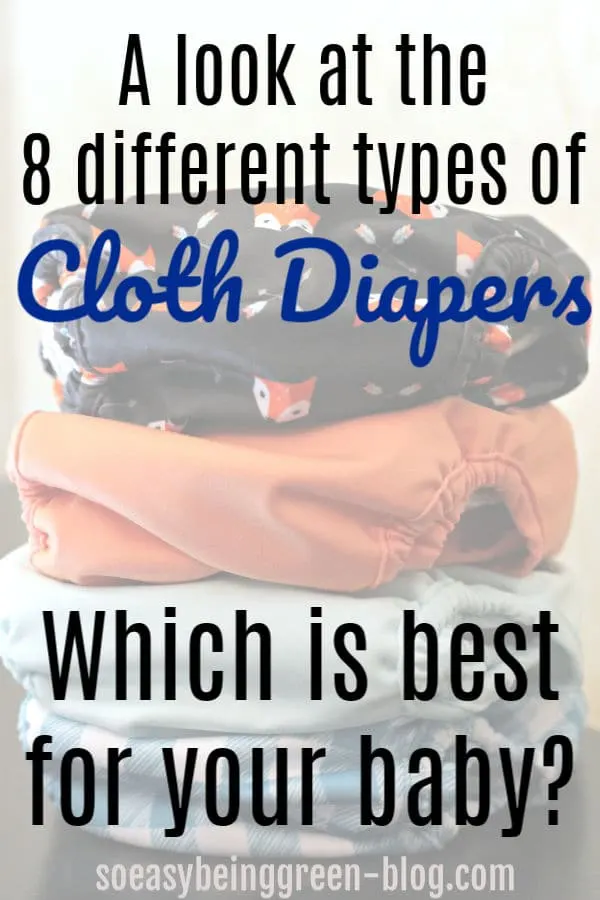
This post may contain affiliate links. By purchasing through these links, I may make a commission. Thank you for your support.
Click on each style below and you’ll find an easy-to-understand description and picture of each type of diaper. I’ve also weighed the Pros & Cons of each type to help you decide which type of cloth diaper is best for you and your baby.
Types of Cloth Diapers
| All-in-Ones [AIO] | All-in-Twos [AI2] |
| Diaper Covers | Fitteds |
| Pocket Diapers | Prefolds |
| Cloth Trainers | Swim Diapers |
All-in-One Cloth Diapers
All in One cloth diapers, often referred to as AIOs, are a diaper with a waterproof layer. There is no need to stuff them, as the soaker is sewn into the diaper itself. The absorbent diaper and the cover are “all in one”, hence the name.
AIOs come in different varieties. There are one-size and sized varieties. There are also some that you are able to add more absorbency to because they have openings {similar to pocket diapers}.
These diapers are the closest to a disposable diaper, which makes them a great first cloth diaper for you to try. They also make great “Dad” or “babysitter” diapers because they are one of the simplest types of cloth diapers.

My Favorite AIOs are bumGenius Freetime [pictured above], Thirsties Duo AIO, and Bummis Tots Bots EasyFit [this diaper is no longer made, but has been updated to the PURE All in One diaper from Bummis].
Pros:
- Often trimmer than other types of cloth diapers.
- Ease of use. No stuffing or un-stuffing required.
- The whole diaper gets thrown into the wetbag or pail, making it easy to do cloth diaper laundry.
Cons:
- Depending on how they are made, drying time can be considerably longer than other types of diapers.
- Also depending on style, you may not be able to add more absorbency.
- All-in-Ones tend to be a more expensive type of cloth diaper.
All-in-Two Cloth Diapers:
All in Two cloth diapers, often referred to as AI2’s are very similar to AIOs. The main difference is the fact that you can take out the insert, whereas in an AIO the insert is attached to the diaper itself.
All-in-Two’s literally mean that there are 2 parts to the diaper: a diaper cover and diaper insert. AI2’s are very similar to pocket diapers, but the inserts often simply lay into the cover, rather than having to be stuffed in a pocket. For this reason, most AI2 inserts are made of organic materials {organic cotton, hemp, bamboo, etc} not microfiber.
AI2’s come in different varieties. You can find One-Size versions, as well as sized. Two of the most popular All-in-Two cloth diapers are GroVia and Flips. These diaper systems are often referred to as Hybrid Cloth Diapers because they can be either a full cloth diaper [with cloth inserts inside the cover] or have a disposable insert within the cover.
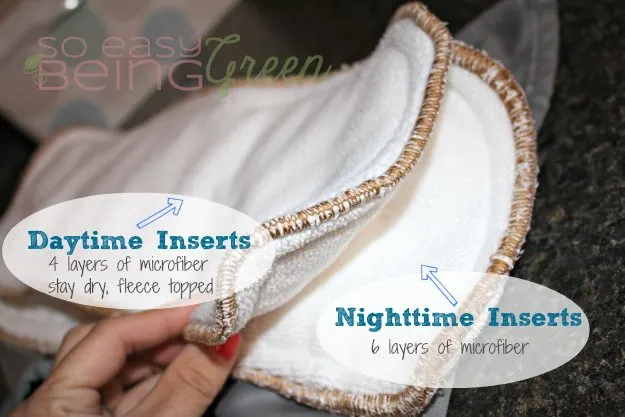
My Favorite AI2’s are Button Diapers [pictured above] and Softbums Diapers.
Pros:
- With most AI2 systems, you can re-use the cover a couple of times [if it doesn’t get soiled] with different inserts. For example, 1 cover and 4 inserts could last you through four diaper changes meaning you don’t have to buy as many cloth diapers.
- Fairly inexpensive way to cloth diaper, in the long run, because you can re-use the covers.
- Drying time is greatly reduced from an AIO because the insert is separate the diaper dries much faster.
- Have Hybrid/Disposable option.
Cons:
- Expensive at the Start. Some AI2’s can be a bit expensive initially because the inserts cost quite a bit, but in the long run it’s a cheaper system than pocket diapers because the covers can be used a couple of times before they need to be washed, meaning you need less covers than inserts.
Diaper Covers
Diaper Covers are just like the name implies. They cover your diapers that don’t have a waterproof layer. If you are using a prefold, flat, or fitted cloth diaper, you’ll need to use some sort of cover to make it waterproof.
Diaper covers come in two styles: Pull-On, which is most often made of fleece or wool and Wrap style, which usually fasten with either aplix or snaps.
Diaper covers can be made from a variety of materials but are primarily made of either PUL [slick material that is waterproof], Wool, or Fleece. Covers also come in different varieties: one-size versions, as well as sized.
Wool is my absolute favorite type of diaper cover, especially for nighttime diapering. To read more on the benefits and how to successfully use wool, see my page on Cloth Diapering with Wool.
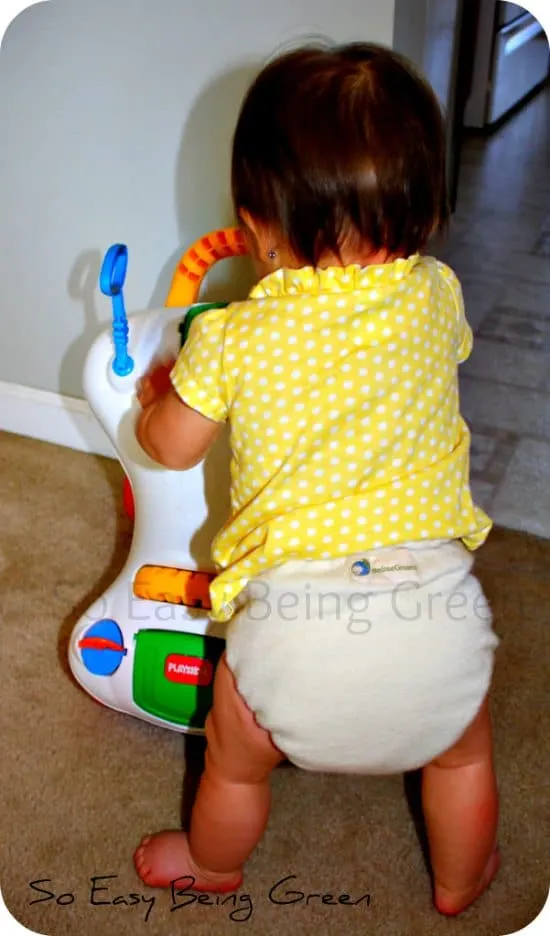
My Favorite Diaper Covers are the Thirsties Duo Wrap and this Babee Greens wool cover [pictured above].
Pros:
- Diaper covers make fitted diapers and prefolds waterproof.
- Relatively inexpensive way to cloth diaper as you can re-use the cover a few times before it needs to be washed.
Cons:
- Depending on what you have under your cover, this system can get pretty bulky on your child – especially a smaller child.
- It’s also a cloth diapering system that takes more time during diaper changes.
Fitteds
Fitted Diapers are cloth diapers that do not contain a waterproof layer. To make these diapers waterproof, you must use a diaper cover over them. Although they can be used without a cover, the diaper will get wet on the outside after a period of time – but I let my girls go with fitteds around the house sometimes.
The name may confuse you a bit because fitted diapers do not refer to the size, as they can come in sizes AND one-size options, but refer to the fact that they “fit” your baby close.

Fitted diapers are made from various types of absorbent materials, such as cotton, organic cotton, hemp, velour, etc. Some have a type of closure, snaps or aplix, and some do not. The fitteds that do not have a closure could either be laid into a diaper cover or you can secure them with a pin or Snappi.
My Favorite Fitteds are Babee Greens Organic Cotton Fitted, the Thirsties Duo Fab Fitted, and the Babykicks Organic Fitted [pictured above].

Pros:
- More breathable than any other type of diaper. Fitteds are often used when a baby has a diaper rash and needs to let skin breathe.
- Usually made out of more natural fibers than other types of cloth diapers.
- The absolute best nighttime cloth diapering combo: When all other cloth diapers leak at night, a fitted with a wool diaper cover will work!
Cons:
- Tends to be very bulky after adding a diaper cover on top of a fitted.
- Tend to be a bit expensive since you have to purchase fitteds and diaper covers and since most major brand fitteds aren’t one-size, you’ll end up buying multiple diapers.
Pocket Diapers
Pocket cloth diapers are, by far, the most popular type of modern cloth diaper on the market [see all the Pros below]. A pocket diaper is a cloth diaper comprised of two different parts, a waterproof cover/shell and an insert. The shell or outside of the diaper has some type of opening, “pocket”, where the insert can be “stuffed”.
Pocket Diapers come in a ton of varieties and can be either sized or one-size diapers. They can also come in either aplix or snap closures and are usually very easy for people to use.
Pocket diapers aren’t considered an AI2 because most of the time their inserts are made of microfiber, which is a material that cannot be put directly against baby’s skin. It has to be under a safe material, like microfleece, which is often referred to as the pocket.
My Favorite Pockets are FuzziBunz and bumGenius.
Pros:
- Customizable! This is what makes Pocket Diapers stand out above All-in-One’s. You can “stuff” your diaper with any type of insert, and however many inserts, that you want/need. Learn more about the different type of cloth diaper inserts here.
- Easy. Most Pocket Diapers are very simple to use and are the modern cloth diaper.
- Dry faster than AIO’s because they are in two parts.
Cons:
- Pockets can tend to be a bit more expensive than other types of cloth diapers.
- You have to stuff them. This takes time after every washing.
- Most Pockets have to be “un-stuffed” before washing which can be a bit messy sometimes.
Prefolds
Prefold cloth diapers are what you might think of as “your Grandma’s cloth diapers”. These are the squares of white cloth that are made of many different layers, sewn together, and divided into three parts with more material and absorbency in the middle.
I’m lumping “Flats” in with my prefold category as they work in just about the same way. The only difference is that flats are just one large piece of cloth that can be folded however you see fit [no bulked up middle], to get the most absorbency.
Most prefolds do not come with closures, so you have to either use a Snappi, diaper pin, or you can simply lay them in a diaper cover. For them to be waterproof, they must have a diaper cover over top. Prefolds come in two main colors: bleached and non-bleached or organic.
My Favorite Prefolds are Bummis and Green Mountain Diapers {I’ve never tried them, but they’re wildly popular!}.
Pros:
- Very affordable and by far the cheapest way to cloth diaper a child. It’s been said that you could use prefolds for the entire diapering process of one child and spend less than $250 – that includes prefolds AND diaper covers!
Cons:
- Can be hard to learn Prefold Folding Techniques.
- Harder to put on a squirmy baby!
- Can be a bulky system.
Cloth Trainers
Cloth Trainers are a great eco friendly option to pull-ups, especially when potty training. In the long run, they are much cheaper than their disposable competition and look less like diapers [and without all the chemicals in their disposable counterparts].
Cloth training pants come in one-size and sized varieties and different types – pocket types, AIO types, etc. Most are Pull-On type but some do come with snaps for quick release in case of accidents. Cloth trainers aren’t meant to absorb as much as cloth diapers as they typically will only hold 1 or 2 accidents before they will leak.
My Favorite Trainers are actually ones that I made, and are much cheaper than buying cloth trainers too. Check out how you can make your own cloth trainers too!
Pros:
- Cheaper than disposable pull-ups.
- Feel and look more like underwear.
- Easier to pull up and down than cloth diapers, when you have a child who is training and needs to use the restroom in a public place.
Cons:
- Not necessary. It’s not necessary to even use trainers in the potty training process.
- Initially seem expensive, especially for the short time a child will likely wear them.
Swim Diapers
Cloth swim diapers are another type of cloth diaper that is often overlooked, but is one of the easiest to use! Even if you don’t exclusively cloth diaper, swim diapers should definitely be on your radar.
While there are manufacturers that make cloth swim diapers, one way to cheaply make your own is to simply use a cloth diaper cover or diaper without inserts.
Swim diapers, even disposable ones, aren’t made to absorb liquid. Their purpose is to keep solids inside the diaper. For this reason, cloth swim diapers are usually welcomed at any public pool just like disposable swim diapers.
My favorite cloth swim diapers are the Bummis Swimmi [pictured above].
Pros:
- Can be reused unlike disposable swim diapers.
- Are relatively inexpensive when compared to disposables.
Cons:
- None!

I hope this post about the different types of cloth diapers helps you decide which type of cloth diapering system is best for you and your baby.
It’s important to take into account who will be changing diapers the most, if your baby will be at home or in daycare, and many other circumstances as to which cloth diapering system will work best for you.
Popular Cloth Diaper Posts
Want to learn even more about cloth diapers? Here are some of my most popular cloth diapering posts.

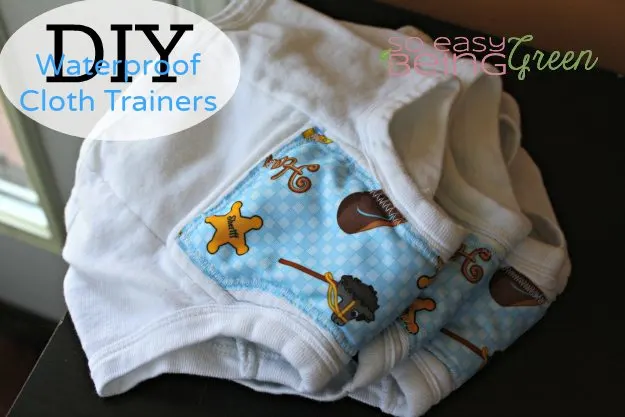


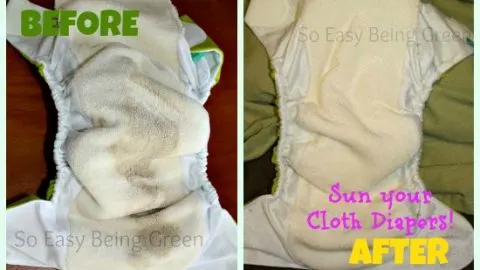





ALL About AI2 Cloth Diapers + How CHEAP they are for a Budget!
Sunday 17th of January 2021
[…] of cloth diapers like pocket diapers, AIO cloth diapers, and even more, check out this post on Different Types of Cloth Diapers page […]
Cloth Diapers: What’s Out There? Brand Recommendations, Pros and Cons (Part 2 of 4)
Saturday 12th of October 2013
[…] If you are interested in reading even more about types of cloth diapers, and their various pros and cons, you can check out this fabulous website. Fair warning, when I first encountered it I kind of went down a rabbit hole. I couldn’t stop reading her various information about cloth diaper products that I’ve never used before: http://soeasybeinggreen-blog.com/types-of-cloth-diapers/ […]
Cloth Diapering on a Budget: Breakdown of Prices by Diaper Systems
Thursday 27th of June 2013
[...] Types of Cloth Diapers [...]